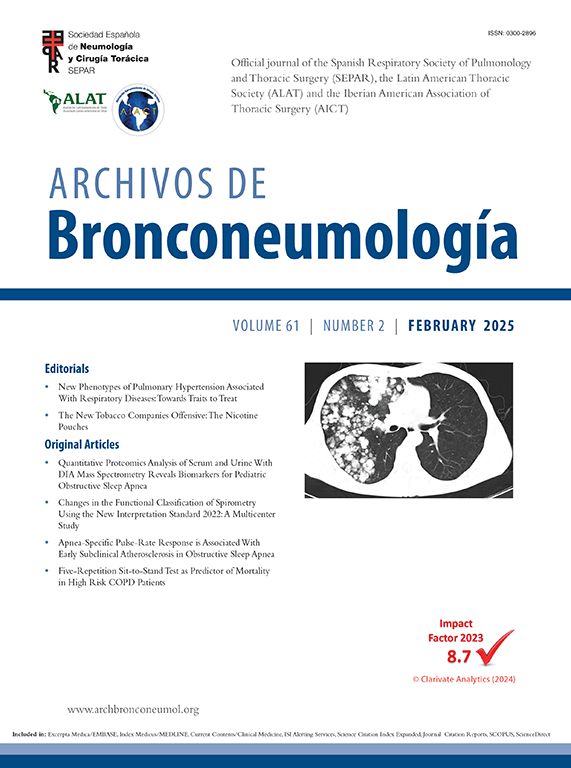A 31-year-old woman, without medicals records was incidentally diagnosed with a mediastinal cyst three months ago. After a complete study with computed tomography (CT), ultrasound-doopler, endoscopy and fibrobronchoscopy, a bronchogenic cyst was diagnosed as the first possibility. The patient came to the emergency room with facial edema and pain in the right upper limb, central thoracic discomfort and dyspneic sensation. Urgent laboratory tests were performed without significant alterations. Urgent CT scan showed an increase in the size of the lesion that compressed and collapsed the superior vena cava and the trachea. Also, images compatible with intracystic hemorrhage were observed (Fig. 1A–C).
(A–C) Thoracic CT in axial, coronal and sagittal planes respectively: Hypodense lesion located in the middle mediastinum presenting dimensions of 8.9cm×9.7cm×10.8cm in the three axes of cystic appearance. It compresses and displaces the superior vena cava without infiltration (white arrow). Medially it contacts the aortic arch. Subsequently compresses and obliterates the tracheal lumen without signs of infiltration. There are areas of increased density compatible with intracystic hemorrhage (black arrow). (D) VATS: Mediastinal lesion of cystic appearance. The dark content (hematoserosus) is observed in its interior due to the thinness of its wall in some areas (black arrow).
It was decided to perform a video-assisted surgical resection (Fig. 1D). The intracystic content (800c.c of hematoserosus material) was aspirated and cystectomy was performed. The patient was discharged without complications 48h after removal of the thoracic drainage. The analysis of the lesion showed compatible characteristics with thymic cyst with no evidence of malignancy.
Thymic cysts are rare and benign lesions that are usually diagnosed in the first decade of life.1 They are more frequent in males (2:1) and located on the left side of the neck.2 Therefore, the above example constitutes an uncommon presentation of rare disease.
Conflict of interestsThe authors state that they have no conflict of interests.












